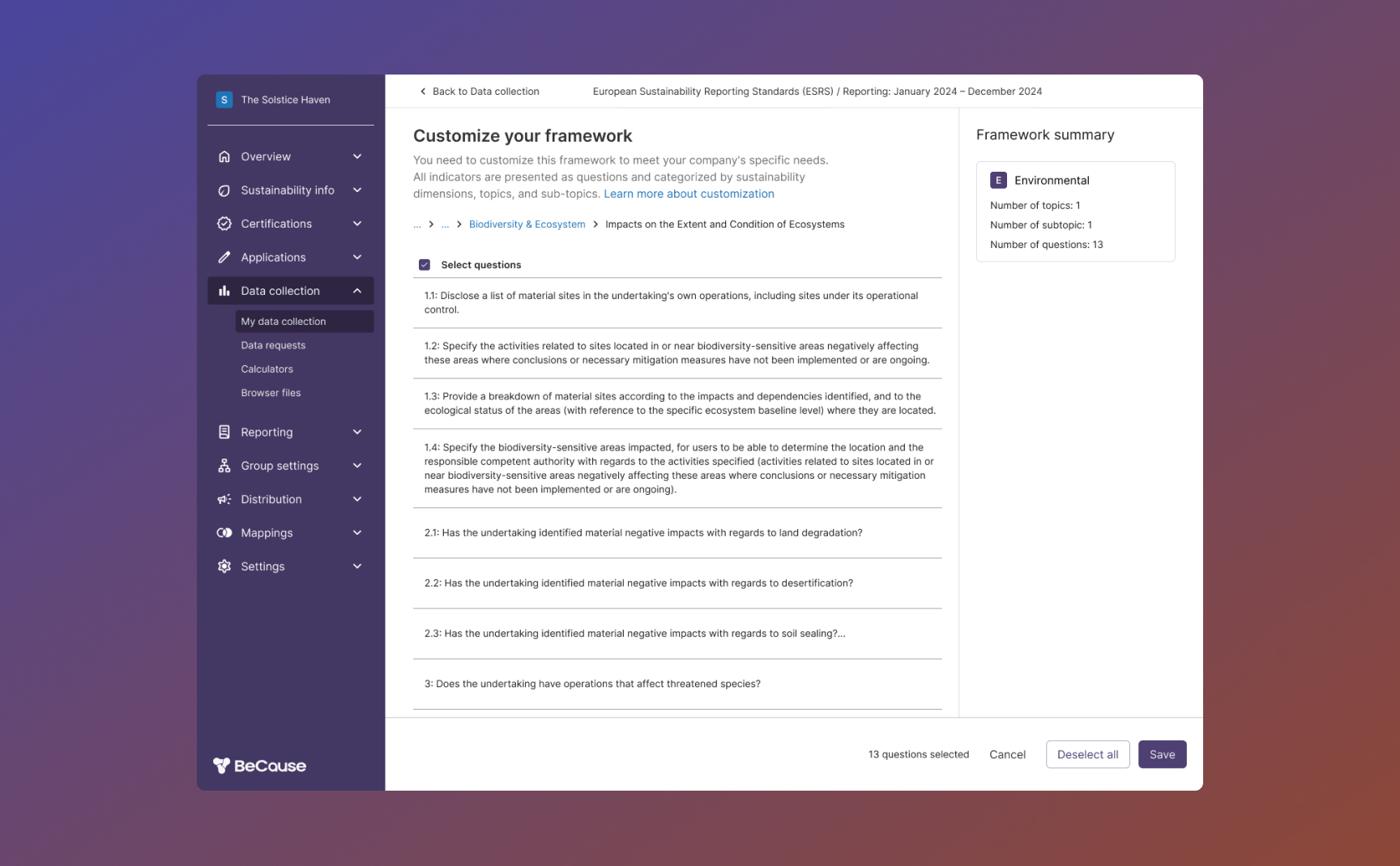Project overview
The European Sustainability Reporting Standards (ESRS), part of the Corporate Sustainability Reporting Directive (CSRD), require large hotels to comply with structured ESG reporting by 2026. As a sustainability hub for the travel industry, we needed to integrate ESRS compliance into our platform, enabling customers to:
- Customize compliance topics
- Delegate reporting tasks across teams
- Generate structured reports with key metrics
Our goal was to design and implement a solution that simplified ESRS compliance while providing a user-friendly experience for hotels that were unfamiliar with the framework.






